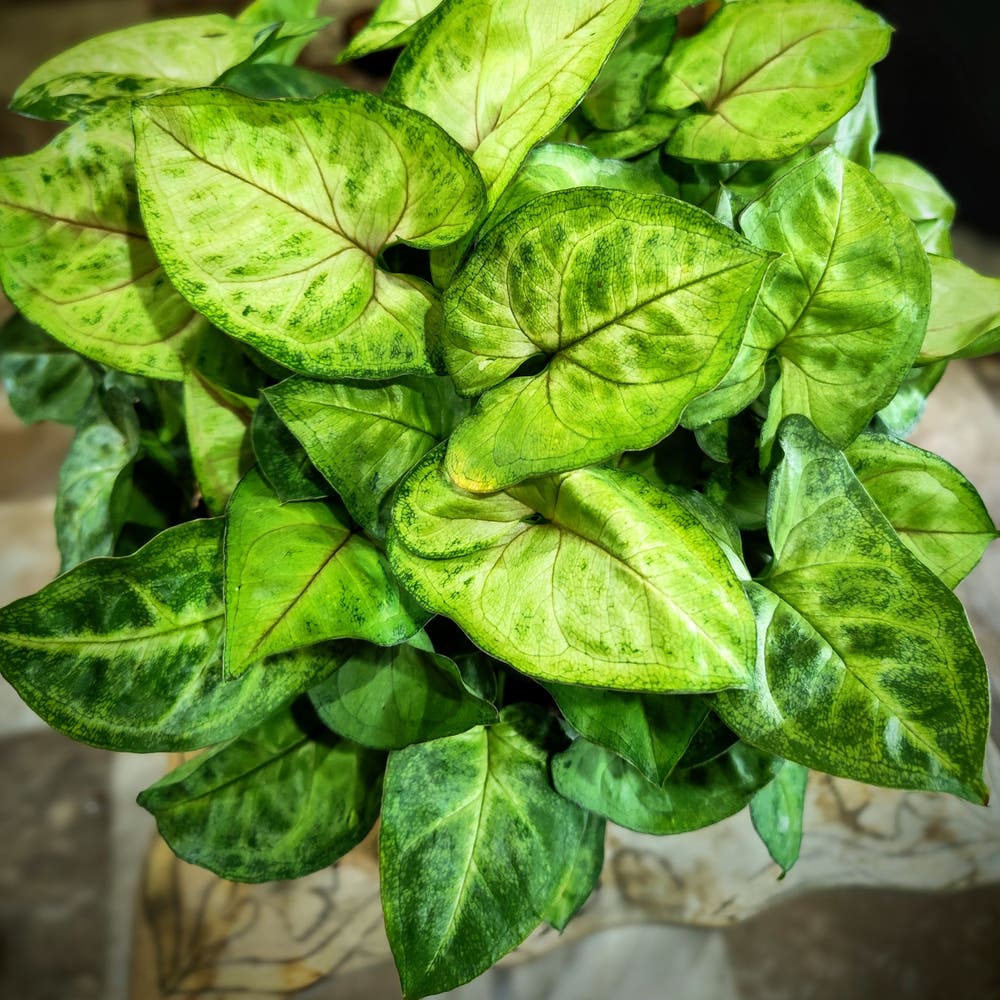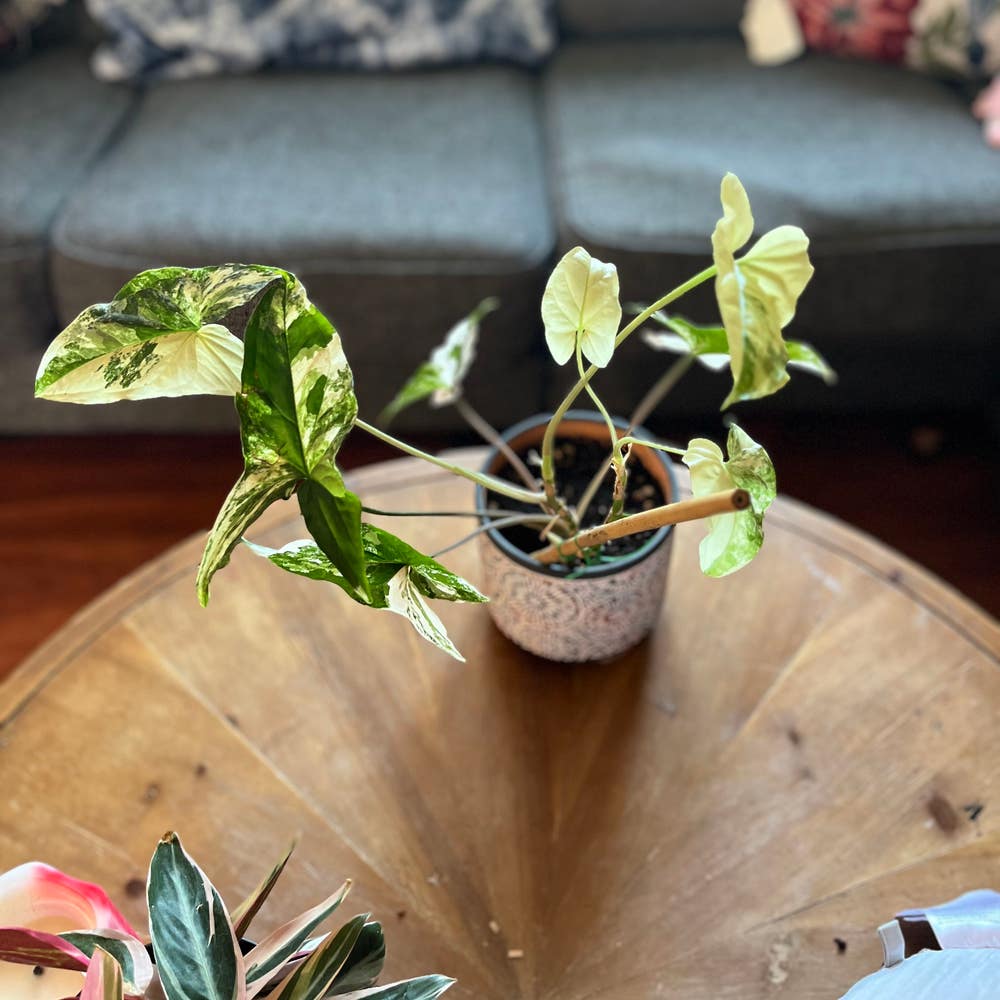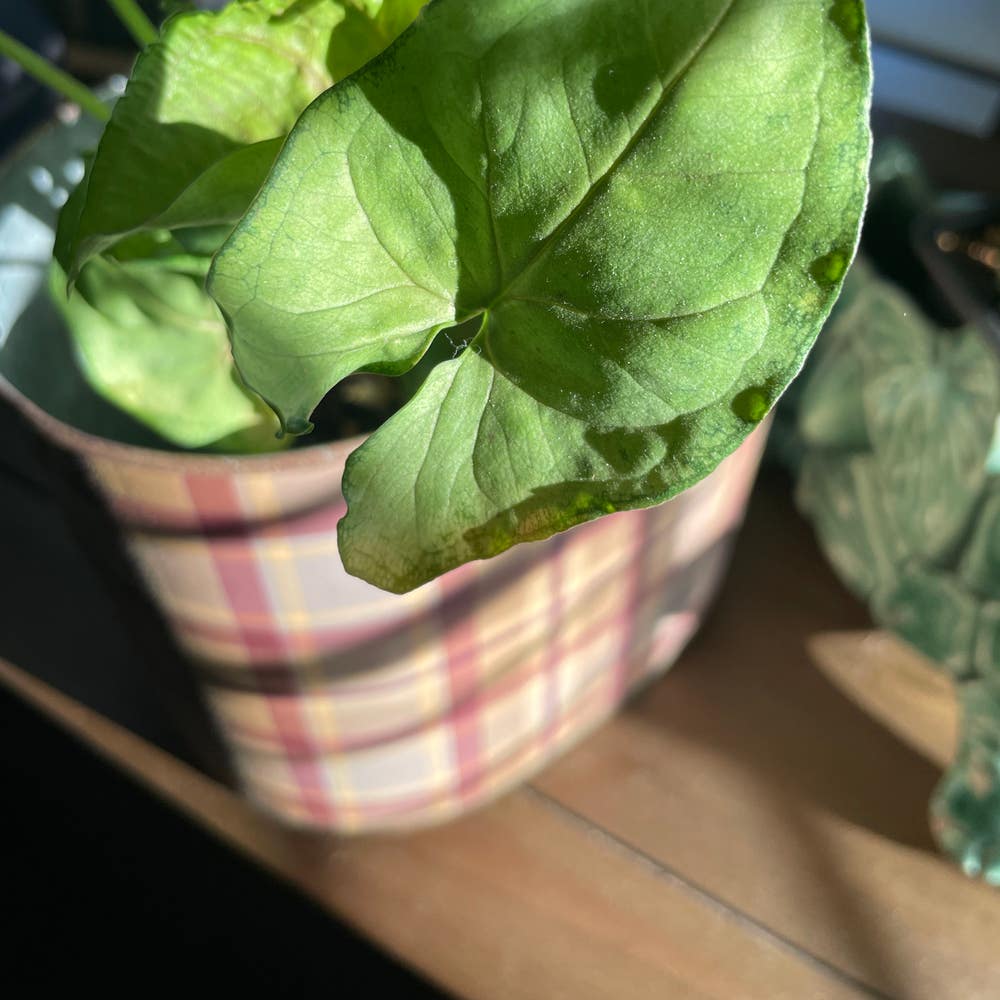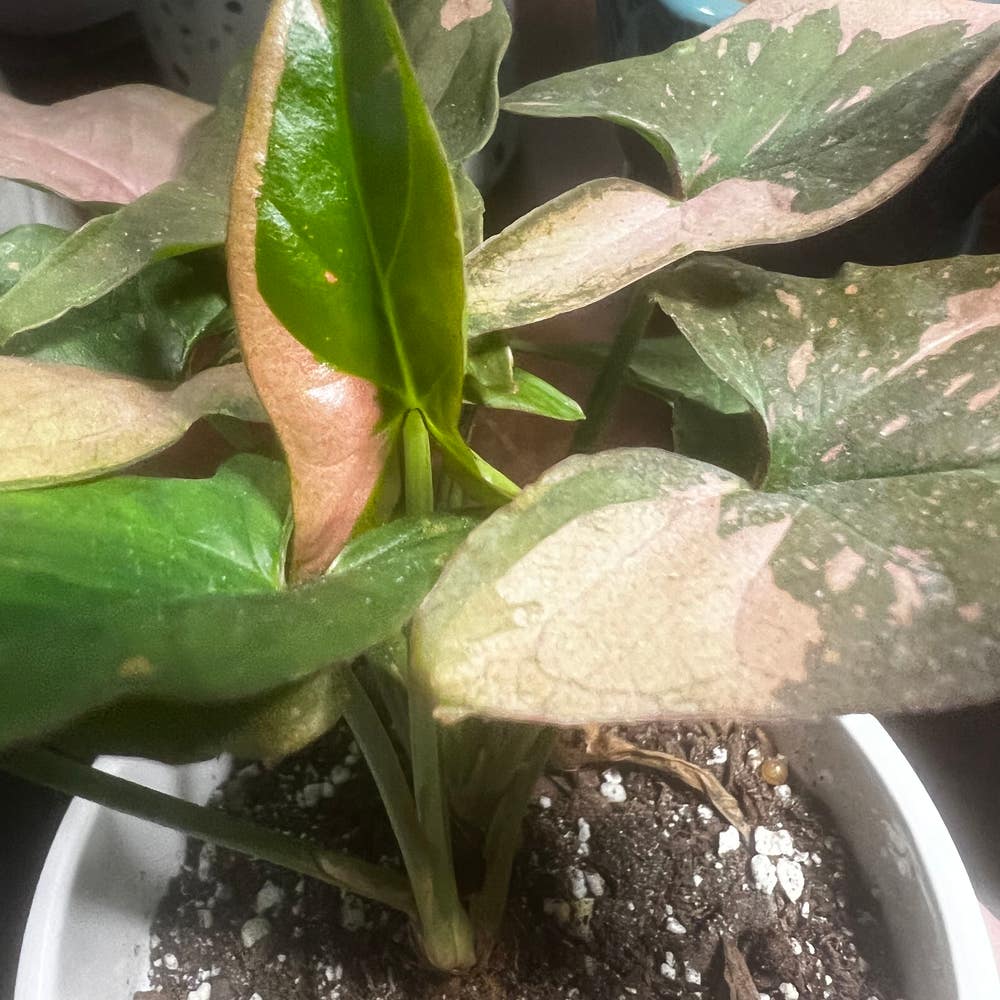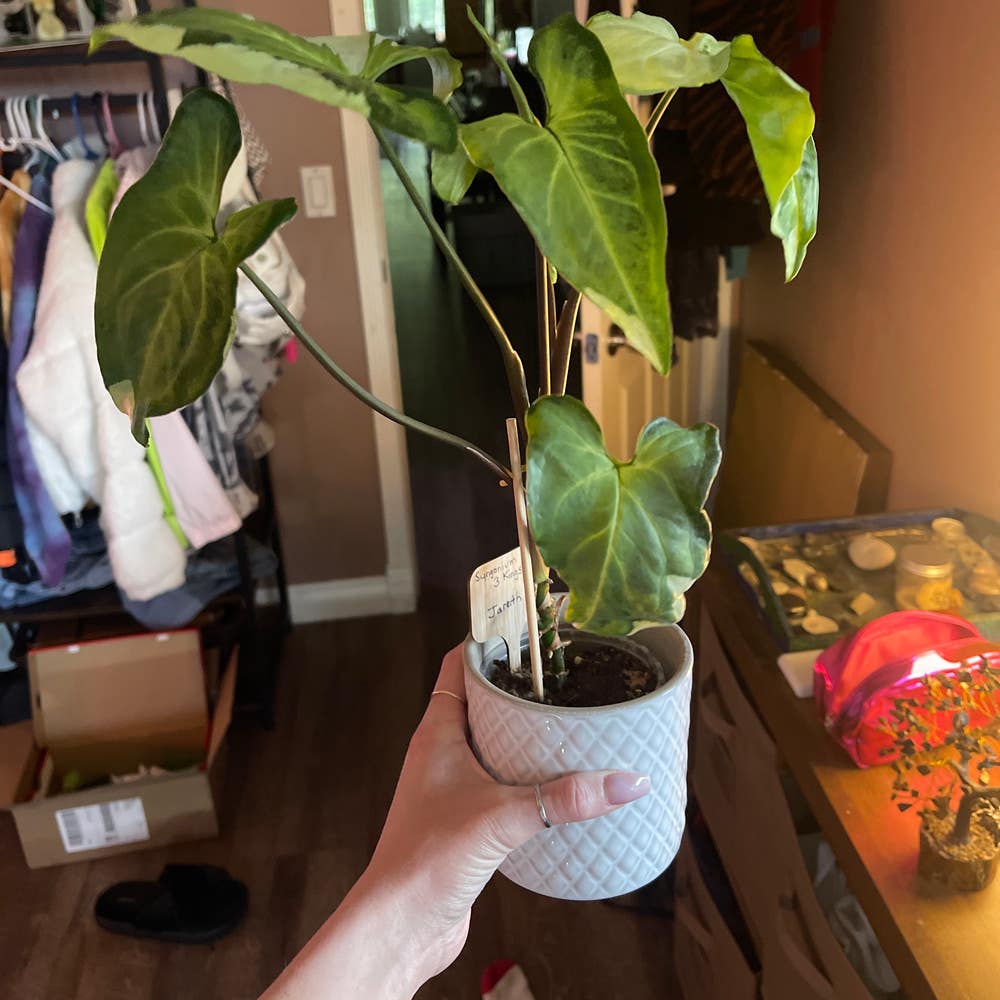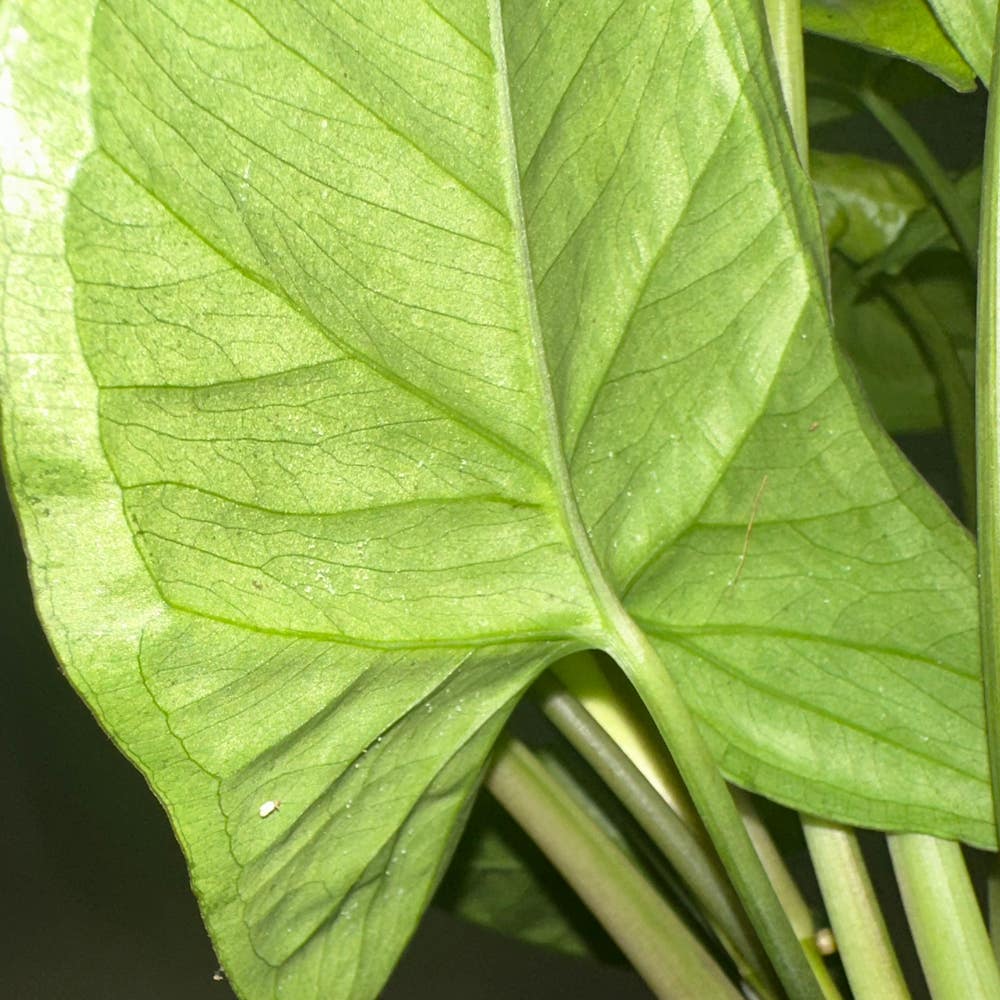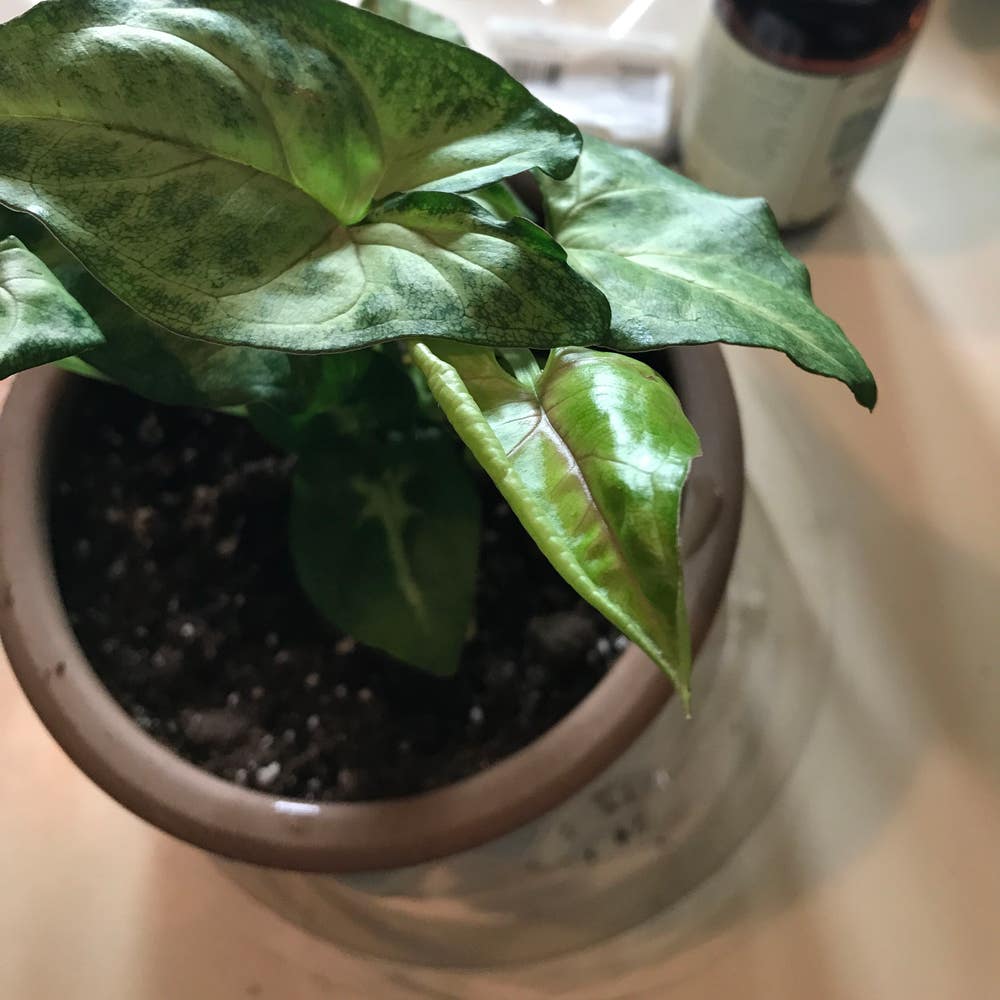

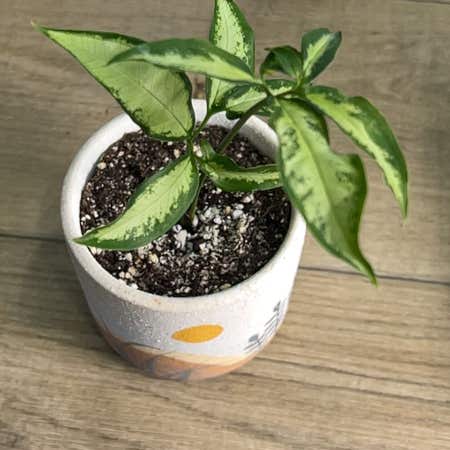



































Syngonium angustatum
About Syngonium angustatum
Syngonium angustatum is a less common relative of the Arrowhead plant with beautiful arrowhead shaped leaves. You’ll often see these plants grown in their juvenile stage, but given something to climb on and abundant sunlight you may see them mature into their adult stage! The leaf shape changes as they mature and may even appear to split into three individual leaves. In the wild they can climb up to 65 feet tall. Be sure to handle them with care, as their sap contains oxalic acid which can be very irritating to the skin and eyes. 👀
Taxonomy

Syngonium angustatum
Syngonium
Araceae
Alismatales
Also known as
Aarowhead

How to care for Syngonium angustatum
How often to water your Syngonium angustatum

every 9
Syngonium angustatum needs 0.5 cups of water every 9 when it doesn’t get direct sunlight and is potted in a 5" pot.
Use our water calculator to personalize watering recommendations to your environment or download Greg for more advanced recommendations for all of your plants.

Water 0.5 cups every
9
Finding light for None in your home

a window
Syngonium angustatum can tolerate being far from a window and light source.
Place it less than 6 feet from a south-facing window to ensure it receives enough light to survive 💪.
Select your region to see how the current weather in your area affects the placement of Syngonium angustatum in your home 🏡.
How to fertilize Syngonium angustatum

Most potting soils come with ample nutrients which plants use to produce new growth.
By the time your plant has depleted the nutrients in its soil it’s likely grown enough to need a larger pot anyway.
To replenish this plant's nutrients, repot your Syngonium angustatum after it doubles in size or once a year—whichever comes first.
-
Artemis! 🏹 #happyplants #syngonium #plantsmakepeoplehappy #greggang #greggers #plantaddict #arrowheadplant
-
I know tomorrow is #FreshLeafFriday thought I share my #syngoniumalbo newest leaf just look at this beauty 😍
-
That moment when you have to stake your syngonium because it's getting hilariously top-heavy after a chop-N-prop a few months ago resulted in new growth points shooting off of every node along the main stem 😂😂 And yes, @A1duzit, this is all from the cutting you gave me 😂 #happyplants #syngoniumsquad #newgrowth #texasgreggang
-
What to #coplant with my #syngonium? Cyndi, my #MariaAlusion #syngonium seems like she needs some cosy friends so I was thinking of co-planting her with at least two other plants, maybe three: - #milkconfettisyngonium I'm thinking the contrast of the lighter coloured leaves with the pink splashes will be nice with the pinkness of the Maria Allusion. - #prayerplant So many colours and patterns! Suggestions welcome. - #alocasiazebrina For the varigated stems! - #foxtailfern aka #asparagusfern or #arecapalm - #nerveplant aka #fittonia ? Not sure about whether to go with a pink or white veined plant. Thoughts? I believe they all have the same watering needs. TIA #gregfam! #companionplanting
-
Besides over/under watering what else could cause yellow spots on leaves of my syngonium? Ever since I brought Ruby home, I have been struggling to help her get rid of her yellow spots on her leaves? I do believe I’m watering her correctly but the spotting persists. It primarily happens along leaf edges. Any advice would greatly be appreciated! #PlantsMakePeopleHappy #HappyPlants #SadPlant #GregGang #Syngonium #SyngoniumSquad #GreggersSupportingGreggers
-
I couldn’t wait for #FreshLeafFriday, I have #NewGrowth on so many plants! My Pink Splash Thai #Syngonium has a beautiful new leaf, with two more coming close behind! My #Alocasia Jungle Cat/Zebrina (still not sure) has a ✨huge✨ new leaf about to unfurl and I can’t wait! Another syngonium has a ton of new shiny leaves, as does my #PinkFleckedSyngonium! Calista (pic no. 4) has 6 new leaves all in the past ten days! She is BUSY! And I wanted to share an update on the root regrowth on my #TigerToothAloe; she lost all her roots back when I was an inexperienced newbie to succulents, and I’ve been patiently trying to root her in water. Well, I added a little bit of the Grow formula from We the Wild (not sponsored but would be, gladly, lol!), and they really got going! I now have multiple nice, long roots. I think at this rate, she willl be ready for repotting in another month 🤗🪴🥳 #SyngoniumSquad #RootPorn #ArrowheadPlant #GregGang #PlantsMakePeopleHappy #HappyPlants #PlantAddict #SucculentLove #SucculentSquad #PlantTherapy #PLANTMAFIA #babevila
-
My arrowhead new baby leaves are turning brown before unfurling :( I mist frequently but the baby leaves are still coming through with brown spots and tips, any ideas how I can rectify this? I've never had much luck with this type of plant :(
-
So I don’t typically step out of the monstera / pothos box very much, but yesterday a friend gave me this beautiful 3 Kings Syngonium & I’ve been reading up on care for these guys but any other personal recommendations are very much welcome! Please let me know any/all your Syngonium secrets 🫶🏻 #HappyPlants #PlantsMakePeopleHappy #PlantAddict #PlantTherapy #PlantLove #Syngonium
-
Helppppp… what’s the little white thingys on Bentley? (Zoom in 😉) I googled Thrips, but I’m not sure. Whatever it is it’s not moving, it’s on most of the bigger leaves. Was going to repot it today and noticed. Thanks in advance 🫶🏽🪴 #help #Syngonium #ArrowheadPlant
-
What’s up with my Arrowhead’s curled leaf? Is this a new leaf? Or is this a sign that something isn’t going right and it’s unhappy? It looks new…
Care Summary for Syngonium angustatum

Syngonium angustatum
 Greg recommends:
Greg recommends:
 Water
Water
0.5 cups every 9 days
 Placement
Placement
< 6ft from a window
 Nutrients
Nutrients
Repot after 2x growth
Based on the 4” pot your plant is in, and that it doesn’t get direct sunlight.

 Trending in your area
Trending in your area
 Similar to Syngonium angustatum
Similar to Syngonium angustatum
✨ Discover rare plants

Munstead Lavender

Kilimanjaro Plant

Burro's Tail

Hoya crassipetiolata

Cigar Plant

Peperomia 'Harmony's …

Rosularia platyphylla

Eden Climbing Rose

Echeveria Arrow

Blue Moon Wisteria

Hoya 'Memoria'

Sedeveria 'Blue Elf'

Christmas Candle

Raphionacme flanaganii

Red Mistletoe Cactus

White Apple Moth Orch…

Parrot Pitcher Plant

